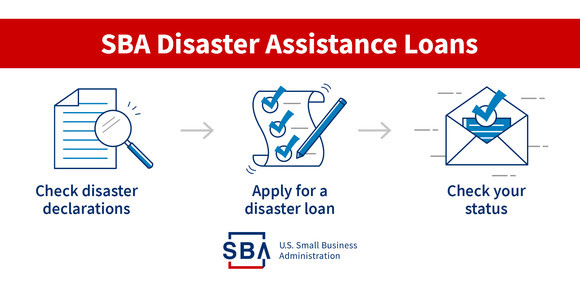IRS: Fecha límite para pagos de impuestos estimados del tercer trimestre es el 15 de septiembre
Video de YouTube del IRS:
WASHINGTON — El Servicio de Impuestos Internos les recuerda a las personas que el 15 de septiembre de 2021 es la fecha límite para los pagos de impuestos estimados del tercer trimestre. Esto generalmente se aplica a las personas que trabajan por cuenta propia y a algunos inversionistas, a los jubilados y a quienes normalmente no pueden tener impuestos retenidos de su cheque de pago por parte de sus empleadores.
El sistema tributario de los EE. UU. opera según el sistema de "pague según gane". Esto significa que los contribuyentes deben pagar la mayor parte de sus impuestos durante el año, a medida que obtienen o reciben ingresos. Por lo tanto, es posible que las personas que no estén sujetas a retenciones deban realizar pagos de impuestos estimados cada trimestre.
¿Quiénes deberían pagar trimestralmente?
En la mayoría de los casos, los contribuyentes deben realizar pagos de impuestos estimados trimestrales para 2021 si se aplican las dos condiciones siguientes:
- Las personas esperan adeudar al menos $1,000 en impuestos para 2021 después de restar sus retenciones y créditos tributarios.
- Esperan que sus créditos tributarios y de retenciones sean menores que el menor de:
- 90 por ciento del impuesto que se mostrará en su declaración de impuestos de 2021 o
- 100 por ciento del impuesto que se muestra en su declaración de impuestos de 2020. Su declaración de impuestos de 2020 debe cubrir los 12 meses.
Los contribuyentes con ingresos no sujetos a retención, incluidos intereses, dividendos, ganancias de capital, pensión para el cónyuge, criptomonedas e ingresos por alquileres, normalmente realizan pagos de impuestos estimados.
Se aplican reglas especiales a algunos grupos de contribuyentes, como agricultores, pescadores, víctimas de accidentes y desastres, aquellos que recientemente quedaron discapacitados, jubilados recientes y aquellos que reciben ingresos de manera desigual durante el año. La Publicación 505, Retención de impuestos e impuesto estimado (en inglés), proporciona más información acerca de las reglas de impuestos estimados. La hoja de trabajo en el Formulario 1040-ES, Impuesto estimado para personas físicas (en inglés), o el Formulario 1120-W, Impuesto estimado para sociedades anónimas (en inglés), tiene detalles acerca de quién debe pagar el impuesto estimado.
Multa por pago incompleto
Si el pago de impuestos del contribuyente fue incompleto, es posible que deba pagar una multa. Esto se aplica ya sea que hayan pagado mediante retenciones o pagos de impuestos estimados. También se puede aplicar una multa por pagos tardíos de impuestos estimados, incluso si a alguien se le debe un reembolso cuando presente su declaración de impuestos.
Si el contribuyente debe una multa, debe usar el Formulario 2210 (en inglés). El IRS puede suspender la multa si se pagó menos debido a circunstancias inusuales y no a negligencia intencional. Algunos ejemplos incluyen:
- pérdida, desastre u otra situación inusual,
- una persona que se jubila después de cumplir 62 años durante un año tributario cuando se aplicaron los pagos de impuestos estimados y
- una persona quedó discapacitada durante un año tributario cuando se aplicaron los pagos de impuestos estimados.
Cómo calcular el impuesto estimado
Para calcular el impuesto estimado, una persona debe calcular su ingreso bruto ajustado (AGI) esperado, ingresos tributables, impuestos, deducciones y créditos para el año. Al calcular el impuesto estimado para 2021, puede ser útil para empezar usar los ingresos, las deducciones y los créditos para 2020. Use la declaración de impuestos federales de 2020 como guía. Los contribuyentes pueden usar el Formulario 1040-ES para calcular su impuesto estimado. Los extranjeros no residentes usan el Formulario 1040-ES (NR) (en inglés) para calcular el impuesto estimado.
Los contribuyentes deben hacer ajustes tanto por cambios en su propia situación como por cambios recientes en la ley tributaria. Por ejemplo, las disposiciones tributarias del Plan de rescate estadounidense de 2021 pueden afectar la situación de un contribuyente individual. Para obtener más información, consulte la Publicación 505 bajo "What's New for 2021" (Novedades para 2021).
Para obtener información acerca de estos y otros cambios en la ley, visite IRS.gov. Las instrucciones para el Formulario 1040-ES incluyen una hoja de trabajo para ayudar a los contribuyentes a calcular su impuesto estimado. Guarde la hoja de trabajo en sus archivos.
El Estimador de retención de impuestos en IRS.gov ofrece a los contribuyentes un método claro, paso a paso, para retener la cantidad correcta de impuestos de salarios y pensiones. También tiene instrucciones para presentar un nuevo Formulario W-4 (SP) para entregárselo a su empleador para ajustar la cantidad retenida cada día de pago.
Otros recursos de IRS.gov
- La pestaña Pagar en la página principal de IRS.gov brinda información completa acerca del pago de impuestos, cómo y cuándo pagar, opciones de pago y más.
- Formulario 2210, Pago insuficiente del impuesto estimado por individuos, sucesiones y fideicomisos (en inglés)
- Formulario 2220, Pago insuficiente del impuesto estimado por corporaciones (en inglés)
- IRS: Compensación por desempleo es tributable; retenga impuestos ahora y evite una sorpresa a la hora de impuestos
El cuarto y último pago de impuestos estimados de 2021 vence el 17 de enero de 2022.


















